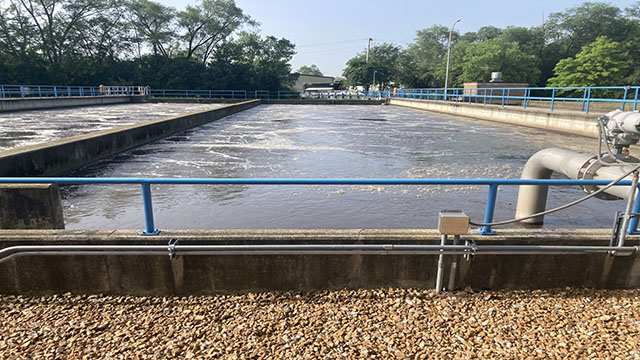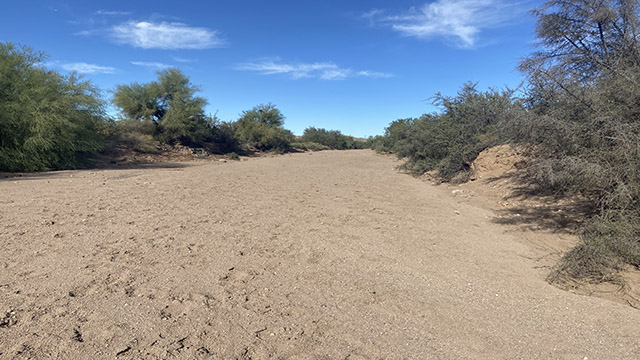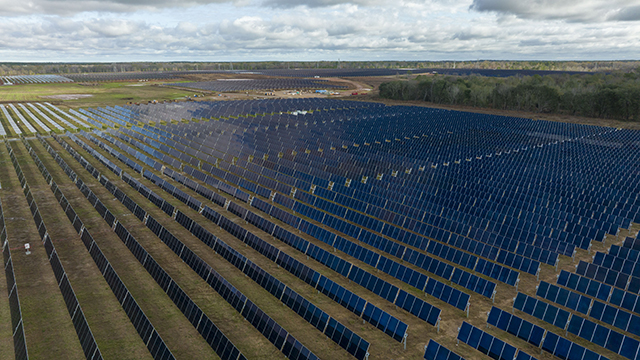As increasing numbers of renewable energy generation facilities are installed in the U.S., the realities of their operational impacts have sometimes been surprising.
While renewables in general, and solar power in particular, have been touted as generally benign with regard to environmental impacts, some solar projects that have recently been placed in service reveal that mortal risks to wildlife, and especially avian species, are likely to demand additional consideration and management. This means new mitigation efforts are now being tested and developed.
Concentrating Solar and Solar Streamers
Large concentrating solar plants use “power towers” that consist of hundreds of thousands of computer-controlled mirrors to track the sun throughout the day, reflecting the sunlight to boilers at the tops of two or three approximately 450-foot tall towers. The concentrated sunlight heats the water in the boiler pipes to create superheated steam, which is then piped to a turbine to generate power.
Birds, insects, and bats that fly through the highly concentrated, high-temperature (800 to 1,000 degrees F) solar beams – sometimes called solar flux – at concentrating solar plants have been given the name “streamers” by operators of these facilities. When the insects, birds and bats fly through these beams, they are ignited in midair, creating a plume of smoke, or streamer. The animals may be killed by the heat, by the force of falling to the ground, or by a waiting predator.
A small number sustain injuries that they can recover from when they are discovered and taken to wildlife rehabilitation facilities. Less documented, but of equal concern, are the impacts on larger birds, such as raptors, that are powerful enough to fly away from a site even after being singed or otherwise injured by the solar beams. Most solar facilities conduct monitoring for wildlife within their site boundaries, but do not generally monitor outside the fence line to keep track of the impacts to individual animals that may fly beyond the site.
This apparently unforeseen impact is alarming because of the frequency of the streamer phenomenon that has been observed – an estimated one every two minutes – by U.S. Fish and Wildlife Service (USFWS) law enforcement personnel at a large concentrated solar project in California.
Additionally, observations support the theory that the brightness and intensity of the light from large solar fields may be attracting insects even during the daytime, which in turn attracts their predators, birds and bats. Night lighting of these facilities consists of security lighting, which also attracts insects and their predators from the surrounding darker desert. The USFWS Office of Law Enforcement in a report released in April 2014 refers to the types of large-scale solar projects that cause these impacts as “mega-traps.”
“Lake Effects” of Large Solar Photovoltaic Projects
Solar photovoltaic projects consist of hundreds or thousands of solar panels that convert sunlight directly into electricity. Large solar fields such as those that have been built in the last several years in Southern California and the desert Southwest can fool birds into changing flight direction, sometimes during migration, to approach them because they appear to be lakes from a distance.
Many of the birds that have been killed at these large solar sites are waterbirds, which indicates that these birds fly to solar fields and realize too late in their descent that the solar panels are not water. The waterbirds then collide with the solar panels and are critically wounded or killed. Some waterbirds also have great difficulty taking off from non-water surfaces, which could leave them stranded in desert areas without food, water or shelter.
Potential Mitigation
Mitigation measures for the impacts of large solar PV projects are complicated by the variety of bird and other species being affected. Some approaches being tested include turning off or replacing bright lighting at the sites with LED lights to avoid attracting insects and use of netting to exclude birds from the panel area. Other measures being explored include removing vegetation that could be attracting birds to the project area; creating patterns on the panels that attempt to visually deter birds; using predator and distress call recordings; shutting down projects during key migration times; and using roosting and perching prevention.
Creation of habitat areas located outside large solar project areas, to draw birds away from the solar projects, has also been proposed.
Specific mitigation measures to reduce the number of streamer impacts from concentrating solar projects have been more challenging. To date, regulatory measures promoted or imposed by USFWS or other agencies have been largely dependent on current experience and knowledge, which is not extensive and varies considerably depending on location.
The USFWS has under consideration several approaches, including the possibility of a permit program (perhaps similar to that for eagles) that may limit the number of injuries or fatalities allowed. Meanwhile, several interest groups have advocated suspending operations of these large concentrating solar projects until effective mitigation measures can be determined and proven. One proposed concentrating solar project in California has already been withdrawn from consideration by the California Energy Commission, at least partially because of objections by local stakeholders about the impact on wildlife.
As the industry continues to monitor the collateral effects of solar energy, mitigation solutions are being tested in project design, planning and avian avoidance measures. Remedies for existing and future solar projects will require increased collaboration between design engineers, environmental specialists, developers and owners.
Subject Matter Expert
Dusty Miller: MillerDL1@bv.com








